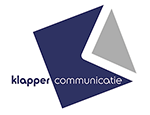Deze week werd door IMMovator het eerste Cross Media Café van dit jaar georganiseerd, met als thema online video formats. De onderwerpen varieerde van meer technische onderwerpen zoals 4k televisie en videoherkenning tot trends in online video formats. Als media consultant die vooral in online video formats is geïnteresseerd, was het even doorbijten om uiteindelijk bij de trends te belanden. Welke trends in online video formats kwamen zoal aan bod?
De online branded content video
Na de eerste twee sprekers bleek het programma toch meer samenhang te vertonen dan in eerste instantie gedacht. Uit het verhaal van EndeMol/Shine bleek dat branded video formats – veelal gebaseerd op bekende tv-formats – de aandacht hebben bij de televisieproducent. Er worden inmiddels voor verschillende partijen branded video formats geproduceerd waarbij de producent zelf het risico draagt. In feite biedt de producent ook video formats aan buiten de tv-zenders om, op eigen IP kanalen. Het levert weinig spectaculaire formats op, maar de online branded video formats zijn goed geproduceerd en gepositioneerd.
De online 360 graden video
NewBeTV – producent van (branded) video content als TheTubeShow en tv-programma’s als Who’s in Who’s Outs (BNN) – toonde hun eerste 360 graden video format (virtual reality) over het nieuwe Nederlandse EU voorzitterschap. Inhoudelijk niet een heel sterk format maar het toonde wel aan dat 360 graden video’s een nieuwe beleving kunnen geven voor kijkers op YouTube en Facebook.
Deze trend zal zich ongetwijfeld gaan doorzetten in veel verschillende video formats op online platforms en televisie. Vooral ook omdat je de 360 graden video kunt navigeren met de mobiele telefoon of tablet of met een navigatieknop in Youtube.
De online nieuwsvideo
Ook worden online nieuwsvideo’s verder ontwikkeld. Na de komst van het online nieuwskanaal VICE, komt nu ook NU.nl met een nieuwskanaal gebaseerd op het ‘burgerjournalistiek-principe’, dat ook wordt gebruikt door de regionale omroepen maar nu in een veel hipper jasje is gestoken. Nieuwsfilmpjes van tablet- en mobiele telefoongebruikers gaan live gestreamed worden (met 5 seconde vertraging) vanaf het NU.nl platform. Een mooie toevoeging aan de vele online nieuwskanalen in Nederland.
De online gepersonificeerde instructievideo
Niet alleen worden online nieuwsformats verder door ontwikkeld, maar ook de online instructievideo krijgt een nieuwe impuls vanuit de meer technische hoek. Het bedrijf Red Nun
maakt het mogelijk om klanten een gepersonificeerde video voor te schotelen van energiebedrijven zoals Essent. Zo worden de data uit het CRM systeem van Essent ‘ingelezen’ in de instructievideo om de klant in een animatie te laten zien wat hij/zij over een bepaalde periode heeft verbruikt en hoeveel hij/zij terugontvangt of moet bijbetalen.
De online interactieve video
Naast individualisering van de instructievideo, krijgen online video’s ook steeds meer interactieve mogelijkheden. Een bedrijf als Movietrader maakt video’s ‘klikbaar’ waardoor kijkers allerlei informatie kunnen opvragen tijden het bekijken van een video.
Conclusie
De belangrijkste conclusie van deze interessante middag was eigenlijk dat online video een belangrijke nieuwe impuls krijgt door het gebruik van personificatie en interactiviteit. Ook inhoudelijk worden online video formats vernieuwd, dat vooral tot uiting komt in het gebruik van User Generated News Content in nieuwsvideo formats.
Charles Vaneker
KlapperCom Consultancy
Abonneer u op onze blog
